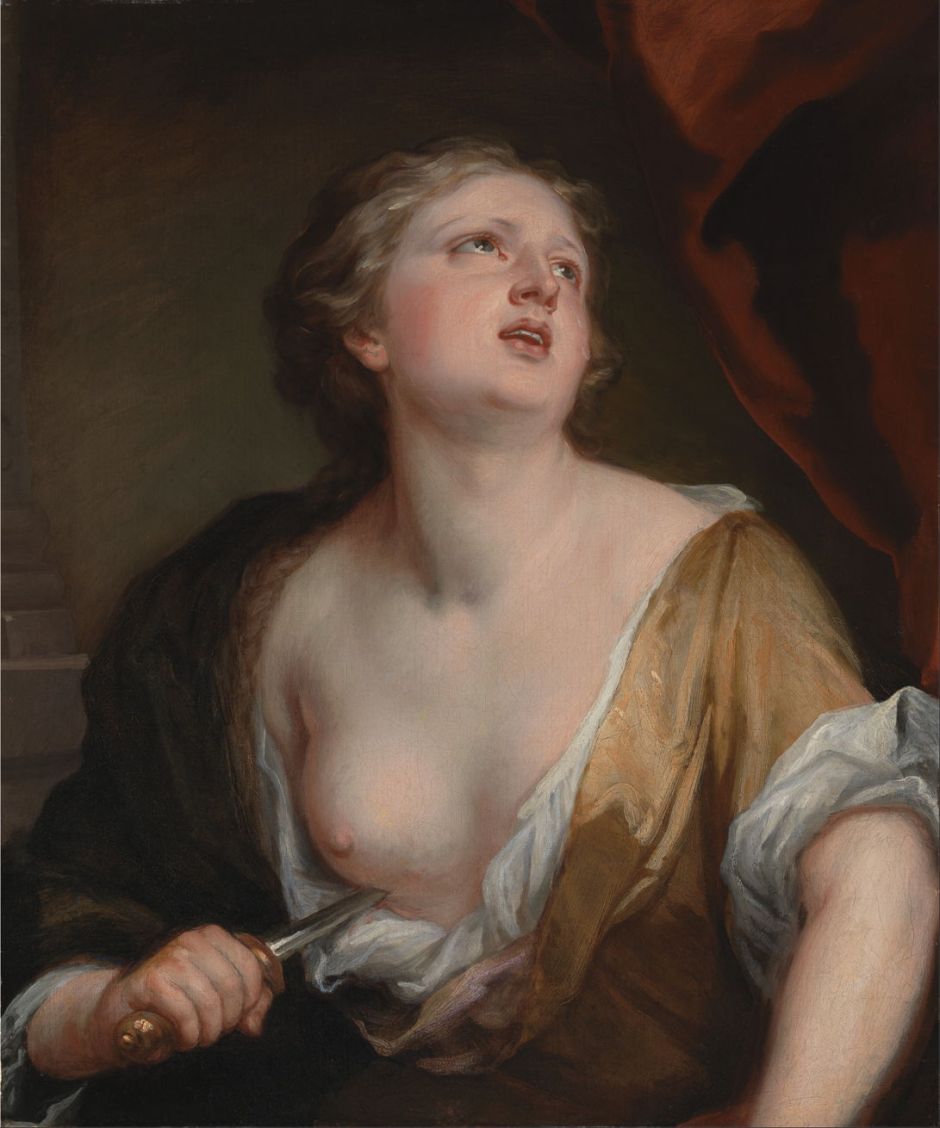Tomorrow is the three-hundredth anniversary of the death of Sir Godfrey Kneller, court painter to a succession of Kings of England from 1680 until his death on 19 October 1723. Before the eighteenth century, painting in Britain relied heavily on migrant and visiting artists. With its obsession for portraiture and in the absence of any academy, court painters were usually brought from the mainland of northern Europe.
Sir Godfrey Kneller (1646–1723), who might sound like an exception, was born Gottfried Kniller in the family of a portrait painter in Lübeck, Germany. After a time as pupil to Ferdinand Bol and Rembrandt in Amsterdam, he travelled to Italy in the early 1670s, and came to England in 1676. He soon had the Duke of Monmouth as his patron, and through him was introduced at the court of King Charles II.

In his early years in England, Kneller painted a few narrative works, among them Elijah and the Angel in 1672. The Old Testament prophet Elijah drew the vengeance of Queen Jezebel, so fled into the wilderness, where he was without food or water. When he fell asleep, he was woken by an angel who had brought bread and water from God to save his life.

Over the period 1672-75, Kneller painted one of the finest depictions of the suicide of Lucretia, who is here caught at the moment that the dagger is piercing her chest. She isn’t wearing the standard black robes of the story, but a plain dress thrown open to bare her chest and right breast. Her head and eyes are cast up, as if looking towards her destination in heaven. She appears tensed and anxious, and her mouth is part open as if she is gasping as the metal passes through the wall of her chest. She grips the dagger in her right hand to drive it into her body. Her left arm hangs by her side, inactive, and behind her is a deep red drape, reminding us of the blood that will soon run from her wound.
Kneller was appointed court painter to King Charles II in 1680 on the death of Sir Peter Lely, a Dutch artist who had spent much of his career painting portraits in Britain.

Kneller made several portraits of King Charles II, who lived between 1630-1685. This is supposed to have been painted late in the King’s life, possibly shortly before his death. Charles had ruled from the restoration of the monarchy in 1660, following Cromwell’s English Commonwealth.
Kneller painted hundreds of portraits of nobles, lords, and a few rightly famous figures of the day.

Among these is this Portrait of Isaac Newton (1642-1727), painted in 1689, when the prodigious mathematician and physicist was forty-six. This was just two years after Newton’s pioneering Principia or Mathematical Principles of Natural Philosophy established the science of classical mechanics.

He painted Lady Mary Wortley Montagu in the period 1715-20. She lived between 1689-1762, and is known for her accounts of travel in Constantinople, and for introducing and promoting inoculation against smallpox before Dr Edward Jenner developed vaccination, a much safer procedure.

In about 1721, Kneller painted the poet Alexander Pope in profile and crowned with ivy, as if he had been a Roman poet.

The majority of Kneller’s portraits show individuals, but a few include children or groups, such as The Harvey Family, also painted in 1721.
Kneller left more than his extensive collection of portraits. In 1711 he established and led the Kneller Academy of Painting and Drawing, one of London’s early private academies that eventually led to the formation of the Royal Academy, and the development of narrative painting in Britain.

